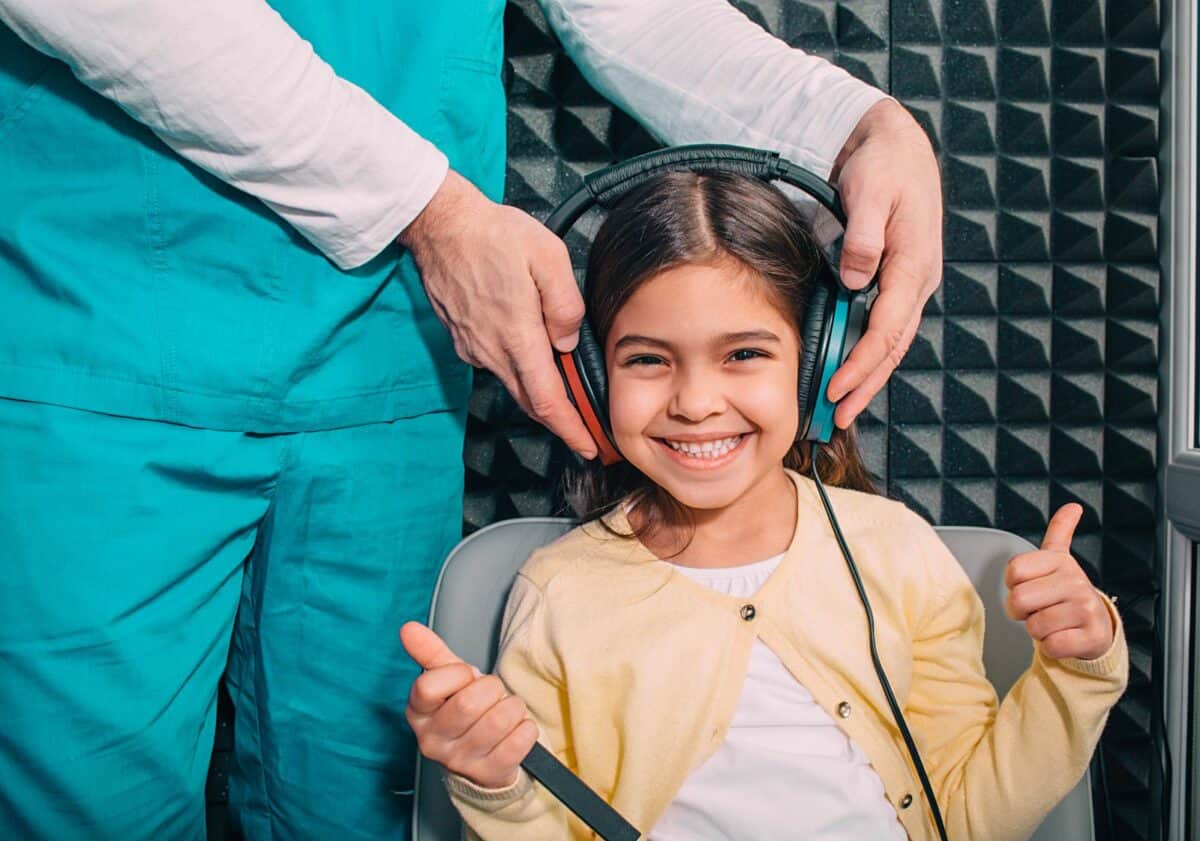0% financing available. Up to 3-year loss and damage guarantee.

Communication Disorders are More Common in Kids than you Think
- Navigating the Conversation: The Significance of Thoughtful Disclosure in Hearing Loss - December 10, 2023
- The Sound of Dreams: Understanding How Hearing Loss Impacts Dreaming - November 7, 2023
- Traveling Effectively with Hearing Aids - October 16, 2023
We all want the very best for our children but as thorough as we are, it’s not always easy to diagnose every issue that may occur. For instance, its estimate that over 10% of children have a communication disorder – one of the most common disabilities among kids. What is most alarming is that all too often communication disorders go undiagnosed or unaddressed for far too long? An important study highlights how commonly parents are generally not aware of the early warning signs of communication disorders in their children.
Common Communication Disorders
“Communication disorders include problems with understanding, speaking, reading and writing,” explains Diane Paul, the director of clinical issues in speech-language pathology for the American Speech-Language Hearing Association. Common types of communication disorders include:
- Phonological Disorder: a condition concerning speech, this disorder causes children to struggle with developing the level of speech appropriate for the specific age group. Those affected may struggle in articulating words, producing complex sentences, and substituting particular words and sounds.
- Expressive Language Disorder: This communication issue is characterized by difficulty concerning verbal communication. Children affected often struggle to recall words, use the proper tense, have limited vocabulary, and refer to simple sentences and words.
The range in which these disorders are experienced are on a spectrum of mild to profound.
Who is Affected?
According to the National Institute on Deafness and Other Communication Disorders:
- For kids between the ages of 3-17, nearly 1 in 12 has had a disorder related to voice, speech, language, or swallowing
- Nearly 11% of children among children ages 3-6 have a communication disorder
Communication is the building blocks of healthy relationships and also helps us to connect to the world. “The ability to communicate effectively is really the essence of what makes us human and it’s also a human right, so if there are problems they need to be addressed.” Paul explains. What is alarming is that the early signs of communication disorders are often misdiagnosed as behavioral issues or attention deficit disorder. Meanwhile untreated symptoms can have a serious impact on the early building blocks of learning, affecting learning, behavior, and social engagement for a lifetime.
Causes & Symptoms
One of the most common causes of communication disorders among children is hearing loss. Commonly associated as a condition which affects older adults, approximately 15% of children have some degree of hearing loss in one or both ears. While many are born with congenital hearing loss, many acquire hearing loss due to exposure to loud noise, chronic ear infections, viruses, or other complications.
Hearing is a doorway to verbal communication and when it is impaired it may be difficult to listen to others, follow instructions and impede the learning process. Sounds may be muffled or slurred and your child may struggle to distinguish words and follow conversations. Noisy environments often make it more difficult to hear and they may complain of buzzing in the ear – a common sign of noise induced hearing damage.
While hearing loss is the most common cause of communication disorders it is important to be aware of other causes including:
- Autism
- Attention deficit or hyperactivity disorder (ADD)
- Developmental or neurological disorder
- Brain injury
- Nervous system disorder
Signs of Hearing Loss in Children
The sooner you can address a communication disorder the better. Once other factors are ruled out, it’s important to consider hearing loss as a serious cause affecting your child’s ability to connect and learn.
Paul suggests that “Parents should really trust their instincts, be aware of these signs and take action and get treatment early if children are having problems,” she said. “Don’t wait and hope a child will outgrow the problem.”
Because younger children and infants with hearing issues don’t always have the language to explain what they are experiencing it’s important to look for signs.
- A newborn baby with hearing loss may not startle when there is a loud noise nearby.
- Older infants, who should respond to familiar voices, may show no reaction when spoken to.
- Children should be using single words by 15 months, and simple 2-word sentences by age 2.
Addressing a Hearing Loss
If you suspect that your child has a hearing loss it is important to address it as soon as possible. Hearing tests involve a relatively quick and painless process that measures the lowest and highest pitches your child can hear. This will help us assess if a hearing loss is present and the degree of the loss. The important thing about hearing loss is that while it is often irreversible it is easily treated using a wide range of methods. The most common are hearing aids which can be programmed to personally enhance your child’s hearing so they can connect to others with ease, participate in class settings and enjoy regular developmental progress. Contact us today to set up your next appointment!
